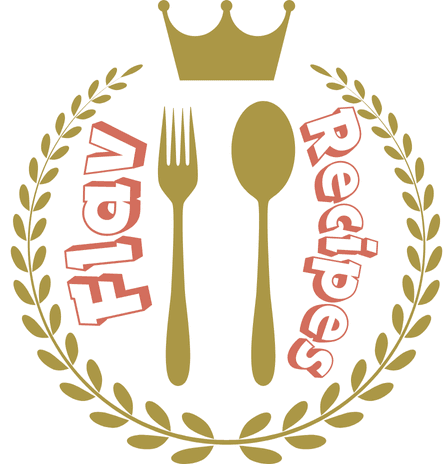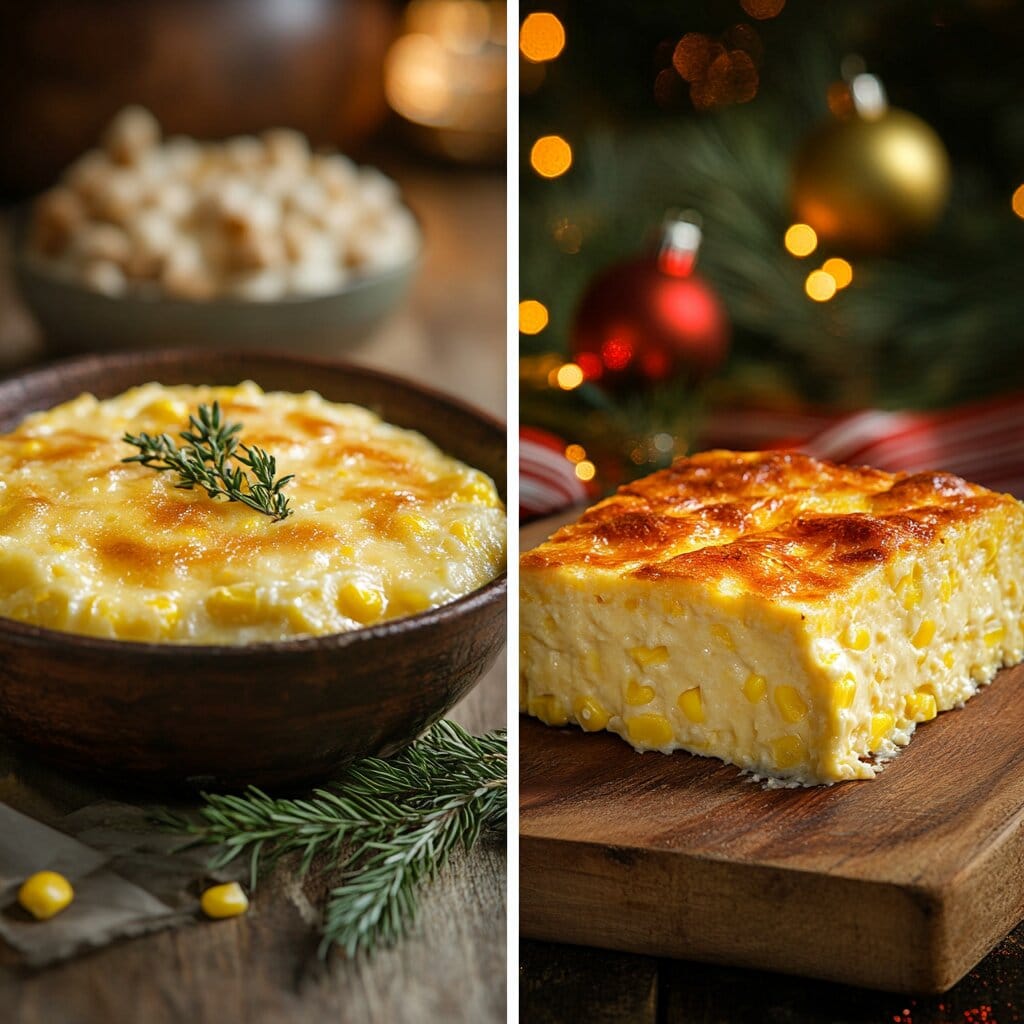Introduction
The Popularity of Corn-Based Dishes
Corn pudding and corn casserole are staples in American cuisine, loved for their versatility, flavor, and simplicity. These dishes bring comfort to family meals, holiday feasts, and casual potlucks, which is why they remain popular across generations.
Why Compare Corn Pudding and Corn Casserole?
Although both dishes use corn as the main ingredient, they differ significantly in texture, preparation, and overall flavor. By understanding these differences, you can decide which dish best suits your needs and elevate your next meal.
What is Corn Pudding?

Historical Background
Corn pudding has roots in early American cooking, blending Native American techniques with European influences. Native Americans used cornmeal in simple dishes, but settlers added ingredients like milk, eggs, and sugar. Over time, corn pudding became a Southern classic, especially during Thanksgiving and Christmas meals.
Key Ingredients and Their Role
Corn: The Star Ingredient
Corn, whether fresh, frozen, or canned, forms the base of corn pudding. Additionally, some recipes include creamed corn to enhance richness and texture.
Eggs, Milk, and Butter: The Binding Trio
These three ingredients work together to give corn pudding its custard-like consistency. Eggs provide structure, while milk and butter add creaminess and flavor.
Sugar and Seasonings: Sweet or Savory Options
Sugar adds a touch of sweetness, while seasonings like nutmeg, cinnamon, or black pepper balance the flavor. For savory versions, cheese or green onions may replace the sugar.
Texture and Flavor Profile
Corn pudding is smooth, custardy, and slightly sweet, with a golden crust on top. This creamy texture makes it a comforting dish that pairs well with roasted meats and vegetables.
When to Serve Corn Pudding
This dish works well for formal dinners, holiday feasts, and gatherings where rich, traditional flavors are appreciated. It’s a crowd-pleaser that complements a variety of main courses.
What is Corn Casserole?
Origins and Evolution
Corn casserole became popular in the mid-20th century, especially when canned goods and corn muffin mixes became household staples. This dish reflects the ingenuity of home cooks who combined pantry items to create hearty and satisfying sides.
Key Ingredients and Variations
Corn Muffin Mix: A Game-Changer
Corn muffin mix, often Jiffy, gives corn casserole its bread-like structure. It simplifies preparation while adding a slightly sweet taste.
Sour Cream and Butter: Adding Moisture and Tang
These ingredients make corn casserole moist and rich, creating a perfect balance between creamy and crumbly textures.
Optional Add-Ins: Cheese, Jalapeños, and More
Additions like cheddar cheese, diced jalapeños, or crispy bacon elevate the flavor, making the dish more savory and satisfying.
Texture and Taste Characteristics
Corn casserole is denser and crumblier than corn pudding. Its texture resembles moist cornbread, while its flavor balances the sweetness of corn with the tang of sour cream.
Occasions Best Suited for Corn Casserole
This hearty and versatile dish is perfect for potlucks, barbecues, and casual family meals. It holds up well on buffet tables and is easy to transport, making it ideal for large gatherings.
Key Differences Between Corn Pudding and Corn Casserole
Ingredients and Proportions
The most noticeable difference between these two dishes lies in their ingredients. Corn pudding relies on milk, eggs, and sugar to achieve its custard-like consistency, while corn casserole uses corn muffin mix and sour cream to create a firmer, bread-like texture. The proportions also vary, with corn pudding leaning heavily on liquid ingredients for its creamy finish, and corn casserole including more dry ingredients for structure.
Preparation Techniques
Corn pudding requires careful preparation to maintain its delicate texture. The batter is mixed and baked until just set, with precise timing needed to avoid overcooking. On the other hand, corn casserole is more forgiving. Cooks can combine all the ingredients in a single bowl, mix them together, and bake until golden brown. This simplicity makes corn casserole an excellent option for beginners or when time is limited.
Texture and Presentation
The texture of corn pudding is smooth and creamy, with a golden crust that contrasts with its soft interior. It is often served in spoonfuls, highlighting its custard-like quality. Corn casserole, in contrast, has a denser, crumbly texture and is typically sliced into squares or rectangles for serving. Its presentation resembles cornbread, making it a visually appealing addition to buffet-style meals.
Popular Variations and Modern Twists

Sweet vs. Savory Versions of Corn Pudding
Corn pudding traditionally leans toward sweetness, using sugar and sometimes warm spices like nutmeg or cinnamon. However, savory versions have gained popularity, featuring ingredients like cheddar cheese, green onions, or even crispy bacon. These variations make it easy to adapt corn pudding to different occasions and preferences.
Creative Additions for Corn Casserole
Corn casserole’s adaptability allows endless variations. Many cooks experiment by adding shredded cheese, diced jalapeños, or crispy bacon to elevate its flavor. Some even go a step further by making the dish entirely from scratch, skipping boxed mixes for a more homemade feel.
If you’re looking to try a version without Jiffy mix, check out this Corn Casserole Without Jiffy Recipe. It offers a from-scratch alternative that’s just as delicious and easy to prepare.
Vegan and Gluten-Free Alternatives
Both dishes can be modified to accommodate dietary restrictions. For corn pudding, plant-based milk and butter substitutes work well, while cornstarch or flaxseed can replace eggs. Corn casserole can be made gluten-free by using a gluten-free cornmeal mix or replacing the muffin mix with a homemade batter. These changes ensure that everyone can enjoy these classic dishes, regardless of dietary needs.
How to Choose the Right Dish for Your Occasion
Considering Guest Preferences
When deciding between corn pudding and corn casserole, consider the preferences of your guests. For those who enjoy creamy, sweet flavors, corn pudding is an excellent choice. If your guests prefer savory, hearty sides, corn casserole is likely to be a hit.
Matching the Dish to the Occasion
Corn pudding’s custard-like texture makes it well-suited for formal dinners or holiday meals, where it pairs beautifully with roasted meats and vegetables. Meanwhile, corn casserole’s firm structure and bold flavors are ideal for casual gatherings, potlucks, or barbecues. Its easy portability also makes it a practical choice for larger events.
Ease of Preparation and Storage
If you’re short on time or want a dish that’s simple to prepare, corn casserole is the better option. Its one-bowl preparation and straightforward baking process make it a favorite for busy cooks. Corn pudding, while requiring more attention, offers a luxurious texture and flavor that’s worth the extra effort for special occasions. Both dishes can be prepared ahead of time and stored in the refrigerator, making them convenient choices for events.
Regional and Cultural Influences on Corn Pudding and Corn Casserole
Southern-Style Corn Pudding
In the Southern United States, corn pudding often features more sugar and butter, emphasizing its rich, sweet flavor. It’s a traditional dish served at Thanksgiving, paired with roasted turkey, ham, or collard greens. Some recipes include nutmeg or cinnamon, adding warm spices that reflect the region’s culinary heritage.
Midwestern Corn Casserole
In the Midwest, corn casserole takes on a heartier, savory profile. Ingredients like sharp cheddar cheese and green onions are common, reflecting the region’s preference for bold, comforting flavors. The dish frequently appears at potlucks and holiday meals, showcasing its versatility and practicality for feeding large groups.
Latin-Inspired Variations
In Latin-inspired adaptations, cooks may add ingredients like poblano peppers, chorizo, or queso fresco. These additions create a spicy and smoky profile that transforms the dish while honoring its corn base. Such variations highlight the global appeal and adaptability of these dishes.
Modern Twists Across Regions
Contemporary chefs and home cooks have introduced innovative twists, such as using smoked meats, roasted vegetables, or even seafood like shrimp or crab. These modern adaptations expand the appeal of corn pudding and corn casserole, ensuring they remain relevant to today’s diverse culinary preferences.
Creative Serving Ideas for Corn Pudding and Corn Casserole
Corn Pudding as a Gourmet Side
Corn pudding can shine as a side dish in elegant, multi-course meals. Pair it with roasted duck, glazed salmon, or lamb chops to create a balance of rich, creamy flavors and savory proteins. For added sophistication, garnish the pudding with fresh herbs like thyme or chives before serving.
Corn Casserole at Casual Gatherings
Corn casserole is perfect for informal settings like barbecues, picnics, or game-day parties. Serve it alongside grilled ribs, pulled pork, or fried chicken for a hearty meal. You can also cut it into small squares and serve it as a finger food with dipping sauces like ranch or barbecue.
Individual Portions for Easy Serving
To make either dish more versatile, bake them in individual ramekins or muffin tins. This method is great for parties and ensures guests get their own perfectly portioned serving. For corn casserole, this approach also enhances the crispy edges, which many people love.
Incorporating Leftovers into New Meals
Leftovers don’t have to go to waste. Use cold corn pudding as a filling for savory crepes or turnovers. For corn casserole, crumble it over a salad or mix it into a hearty soup for added texture and flavor. These ideas turn leftovers into exciting new dishes.
Frequently Asked Questions (FAQs)
What are the main differences between corn pudding and corn casserole?
The main differences lie in texture and preparation. Corn pudding is creamy and custard-like, while corn casserole is denser and resembles cornbread.
Can both dishes be made ahead of time?
Yes, you can prepare both dishes a day in advance. Reheat them gently in the oven before serving to maintain their texture and flavor.
Are there low-sugar or dairy-free options for these dishes?
Absolutely. You can reduce sugar in corn pudding or use plant-based milk and butter for a dairy-free version. For corn casserole, consider using dairy-free sour cream and cheese alternatives.
Which dish works better for large gatherings?
Corn casserole is better for large gatherings because of its firm texture, which makes it easy to slice and serve. It’s also more forgiving during transport.
Can I customize the ingredients in these recipes?
Yes, both dishes are highly adaptable. Add cheese, spices, or vegetables to corn casserole for variety. For corn pudding, try savory add-ins like herbs or omit sugar for a completely different flavor.
Conclusion
Corn pudding and corn casserole showcase the versatility of corn in two unique ways. Corn pudding offers a creamy, sweet experience that complements festive meals, while corn casserole provides a hearty, savory option perfect for casual gatherings. By considering the occasion, guest preferences, and preparation time, you can choose the dish that best fits your needs. Whichever you select, both are sure to bring warmth, flavor, and a touch of tradition to your table.

